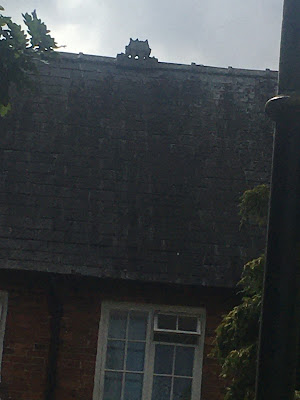Back in July, when I read Amanda Foreman’s Georgiana: Duchess of Devonshire, I made a note that, fairly early into her marriage, she’d written a novel called The Sylph and decided to read it. Rather like her own life, it’s an anti-Cinderella tale, where the troubles really begin with the happily-ever-after marriage.
It’s an epistolary novel of rakes and high-life, and it’s hard not to imagine that Georgiana must have read some Richardson as inspiration. Interestingly, the first few letters are from the rake, Lord Stanley, which gains him some sympathy in the reader which he will then squander away, much as he squanders everything. At the beginning, however, he seems a little impetuous but certainly not a psycho like Lovelace.
Stanley is holidaying in Wales and sees some beautiful women, with one in particular. In following these women, he falls off a rock and is taken in by them where he must rest. As he says; “reflection never agreed with me: I hate it confoundedly”, and to pass the time he discovers a growing infatuation for Julia. Unable to win her round any other way, he marries her and takes her into London and the ‘ton’.
Julia is a little unsure of this new life. She’s aware that she’s not all that bright; “I am a wretched reasoner at best” so she writes to her sister, who is the clever one. She’s shocked at the ways of fashionable London, especially the way that people are always doing things but never seem to think about any of them. She’s shocked how little time she spends with her husband, only chatting at breakfast and sometimes not even then.
Most intriguingly, she is appalled by London’s fashion. She things the clothing absurd and overly showy and is utterly distressed at the hairdressing. Now more are her “brown, silky locks”, she must have her hair powdered and piled on with “half a bushel of trumpery”, all kinds of head-worn nonsense including some radishes which were originally intended for the Duchess of Devonshire. It seems odd that the woman famous for playing with tall hair and outré hair decoration is mocking it so clearly. At one masque, she lets her husband pick her costume. “What character I assumed, I know not, unless I was an epitome of all the folly in the world.”
Julia realises that “fashion makes fools of us all”, something that could be described as the thesis of the book. An interestingly unexpected thesis for a committed leader of fashion.
While her husband ignores her, other sharks circle the naive young wife. Most obviously and disgustingly, there’s Biddulph, who desperately wants a piece of her so he can get one over on Lord Stanley. Then there’s the Baron Ton-Hausen, who seems like a decent sort. In the distance there’s also Henry Woodly, who’s loved her since they were children. Half-way through the book, another man enters, the Sylph.
A Sylph is an air spirit, and this one appears in letters and offers advice. He suggests being careful of the baron and warns about her growing love of gambling, as that is nothing more than a debt-trap. This title figure doesn’t enter until half-way through the book and Julia quickly accepts this mysterious man and his advice. The book doesn’t encourage the reader to see this man in creepy in any way but I found something very menacing about an unknown figure claiming to have deep knowledge and understanding of her.
Again, it’s interesting that the book specifically mentions gambling as a danger. Georgiana was gambling at this time but it hadn’t spiralled into the inescapable trap it became. Once again, she seems to understand and recognise dangers in the book that would consume her in life. Stanley didn’t moderate his gambling though and he quickly burns through his money and hers. In the end, he sells a “commission for his own cuckoldom”, essentially allowing Biddulph to have her. Then he goes and kills himself, and Biddulph realises he has gone too far. I wander if husband-suicide was a daydream of hers?
The book also includes a number of interesting side-stories. There’s a lesser rake who starts his seduction by giving his target a copy of Pamela because he knows that her own lover will not stack up to Mr B. Really? Mr B… he’s one of the most pathetic lovers I’ve read in fiction. Works for that rake at least.
Another good side-story is the one behind Julia’s dad. A long-ish, action-packed story of love, where he joins the army and his lover disguises herself as a soldier to meet him and they both get captured. In terms of action, it has more than the main story, but maybe less in character and social comedy.
The Sylph is a smart, funny book with some decent character building. Especially given its author, it’s strange how clearly she sees her own problems and the idiocy she’s trapped in, and how little she did with that knowledge.













